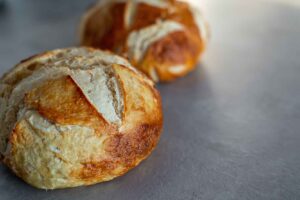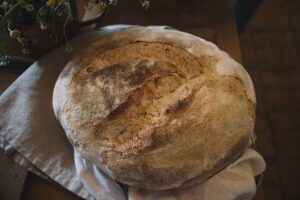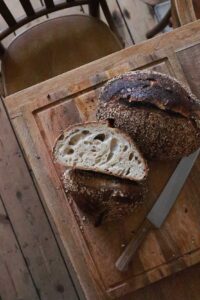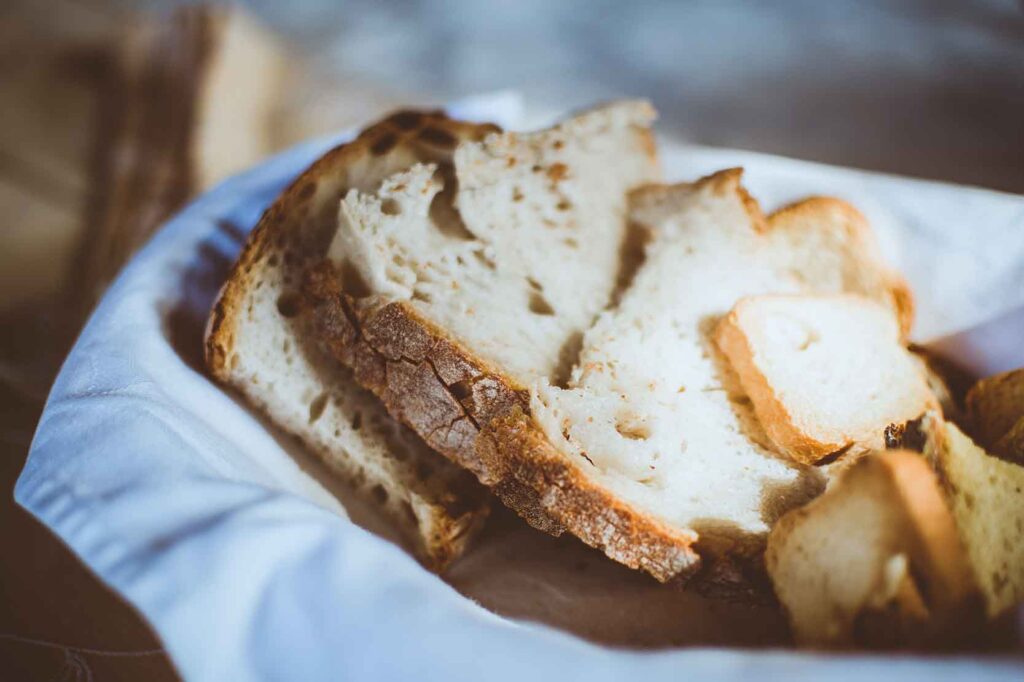Bakers are always looking for ways to make bread and other baked goods even better. One of these methods is using a sourdough proofing basket, which provides unique benefits. Sourdough bread has been linked to many health benefits, such as lowering the risk of diabetes, but it can be challenging to make at home with traditional recipes.
A sourdough proofing basket helps create an environment that’s perfect for this type of baking while also preventing the dough from over-rising and collapsing during the final rise before baking. In addition, its design allows heat to circulate evenly throughout the loaf or pizza so that every bite will have optimal flavor.
What Is A Sourdough Proofing Basket?
A sourdough proofing basket is designed to provide a perfect environment for the dough as it rises, preventing it from over-rising and collapsing. This baking method also offers unique benefits that traditional recipes cannot provide, such as optimal flavor due to heat circulation throughout the loaf or pizza.
What Is Sourdough Bread?
 Sourdough bread has been linked with many health benefits, including lowering the risk of diabetes, but it can be challenging to make at home using traditional methods. Using a sourdough proofing basket helps create an environment that’s perfect for this type of baking while also providing even heat distribution so every bite will have optimal flavor.
Sourdough bread has been linked with many health benefits, including lowering the risk of diabetes, but it can be challenging to make at home using traditional methods. Using a sourdough proofing basket helps create an environment that’s perfect for this type of baking while also providing even heat distribution so every bite will have optimal flavor.
Some bakers may not know what sourdough bread is or how to make it, but using a sourdough proofing basket can provide many benefits. Sourdough bread has been linked to many health benefits, such as lowering the risk of diabetes and being more nutritious than traditional yeast-based recipes. The other area where this type of baking shines is in creating optimal flavor through heat distribution throughout every bite.
Unique Ways To Use A Sourdough Proofing Basket
The following are some unique ways that you can create a sourdough proofing basket:
To start with, purchase a round pizza stone for an inexpensive option that will work well if you don’t have parchment paper on hand. Next, spread flour onto both sides before placing the dough into the center, followed by covering the top with another layer of flour to stick. The dough will rise on the underside of the parchment paper while it cooks, creating a perfect crust with lots of air pockets.
Alternatively, place an inverted baking pan over a cast-iron skillet where you can pour in some boiling water if available to create humidity and steam for your bread or pizza dough as it rises. Ensure there’s enough room between the edge of the proofing basket and edges so that no more than half its contents are inside, ensuring consistent heat distribution throughout every bite.
To get even better results without buying any extra equipment, use a large oven-safe dish such as glass Pyrex or ceramic pie plate instead by lining it with aluminum foil before adding hot water from the tap until it reaches the desired height.
You can also use fabric in place of parchment paper if you’re looking for a more durable option, and it’s easier to clean up too. Cut out some large pieces of cloth or any other type of material that won’t burn before filling with boiling water from the tap until they reach your desired level. This will provide good humidity and steam without making as much mess on your oven floors when creating sourdough bread at home.
How To Make Sourdough Bread At Home: A Simple Recipe For Beginners

Sourdough bread has been linked with many health benefits, including lowering the risk of diabetes. Still, it is challenging to create traditional recipes due to its time-intensive process, requiring two weeks of fermentation. The use of a sourdough proofing basket can help provide the benefits associated with this type of baking without having to wait for two weeks before enjoying it.
The process is quite simple and only takes four hours from start to finish, with most of that time being spent resting in the refrigerator. During this time, lactobacillus will be working on creating its natural yeast while also strengthening gluten development.
Combine water (50% weight), flour (100%), salt (25%) and sugar (15%). Mix until well combined, then rest at room temperature for 12-24 hours, followed by a chilling overnight in the fridge where lactobacillus will create its natural yeast, as you would see when using traditional recipes.
Bring a pot of water to a boil and then take it off the heat before adding some crushed rye sourdough starter. Mix well until you get an even consistency, followed by letting it rest for 12 hours or overnight in the fridge with your dough from step one.
The following day, when ready to bake, preheat the oven at 425 degrees Fahrenheit while shaping the dough into the desired form (round loaf or pizza). Cover edges loosely with aluminum foil and place on a middle rack about ten minutes after turning the oven up if possible. Bake for 30 minutes covered but remove the cover after 20-25 minutes so the top can brown nicely. Remove bread/pizza once done cooking and cool entirely so that steam will evaporate before slicing open as usual.
You can also let bread/pizza cool slightly before baking to give it a darker crust if desired.
Features To Check On A Good-Quality proofing Basket

The proofing basket material is a crucial part of your decision-making. Despite the variety of proofing basket materials, cane is widely popular, due to its smoothness, durability, and ability to create beautiful, defined lines in your loaf. There are also wood pulp baskets, which are less likely to stick, as well as plastic baskets, which are easier to clean but don’t allow air to circulate as well.
Size is also important when looking for one since you don’t want too much space around the edges where heat can escape while baking sourdough bread at home. If you need something more durable than what’s available, place cotton fabric over aluminum foil inside instead so it doesn’t break down.
Defrosting should happen in the refrigerator, not on your counter, where it’s much hotter and can affect the quality of dough created as well as how good it will taste overall.
This is especially important if you’re using a proofing basket for more than one day since doing so could cause bacteria to create its yeast, which won’t produce the best flavor or texture after two days have passed.
If possible, avoid any nylon fabric when looking at different designs. This material isn’t easy to clean and usually doesn’t last long without falling apart with regular use due to high heat temperatures like an oven used during baking.
Alternative ways to use your sourdough proofing basket:
You can also use it to proof dough for pizza. Just make sure you have the correct type of heat proof material that won’t break down with high temperatures and let rise at room temperature overnight before shaping into desired form and baking in the oven.
If not using your sourdough basket, then place a clean dishcloth over aluminum foil inside so that any yeast created by lactobacillus doesn’t evaporate when rising bread/pizza from the refrigerator, which will produce better flavor after one day has passed. And if possible, find an unused pot lid. This is what should be used instead of plastic wrap or other materials like parchment paper where bacteria could grow on top without being noticed because these are made out of porous substances that will break down over time.
You can also use it to proof dough for any bread. Just make sure you have the correct type of heat proof material that won’t break down with high temperatures and let rise at room temperature overnight before shaping into desired form and baking in the oven.
Final Words
If you don’t have a sourdough proofing basket yet, it’s the best way to create a great-tasting crust with less time spent since it’s the only type of dough that should be left at room temperature for about two hours before rising and then refrigerated overnight.
You also want to avoid any nylon fabric when looking at different designs because this material isn’t easy to clean and usually doesn’t last long without falling apart after regular use due to high heat temperatures like an oven used during baking.
Instead, you can place a clean dishcloth over aluminum foil inside so yeast created by lactobacillus doesn’t evaporate from your sourdough bread/pizza bagels when rising in the refrigerator, which will produce better flavor after one day has passed.


